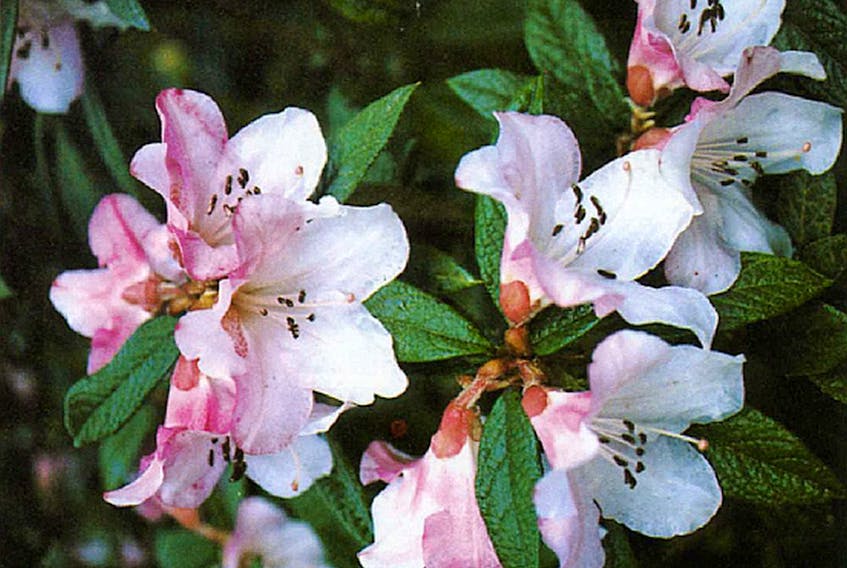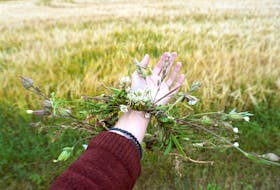Q. Late in the spring, my small cucumber transplants developed bleached areas on the leaves. What causes this?
A. Sunscald was a common issue with cucumber and similar transplants like squash, pumpkin and melon this past spring and early summer. The condition is caused by exposure to excessive heat and bright sun. Sometimes, areas or spots of moisture on the leaves can act as a sort of sunlight magnifier, producing light tan specks or blotches on the leaves.
This is not considered a significant problem. New leaves are usually fine. If a sudden period of high heat and sunshine is predicted, and if spotted leaves bother you, provide some temporary shading for vulnerable plants. Keep the soil adequately moist and if possible, water at ground level.
Very small transplants are most vulnerable. Set out plants that have begun to be a little bit bushy but before they begin to send out trailing stems.
Q. I’ve heard and read conflicting views on whether or not to dead-head expired rhododendron flowers. One “expert” said it was better for the plants to leave them on. What do you think?
A. The usual advice is to snap off faded rhododendron flowers at the bases of the clusters’ stems. One reason given is to help channel the plants’ energies into flowerbud production.
The main reason for the dead-heading, however, is esthetic. Following bloom, the plants look raggedy. Dead-heading cleans them up, but on very large shrubs this is an almost impossible task. I can reach only halfway up my taller rhododendrons, even on a seven-foot orchard ladder. Still, they flower well each year.
Q. Garlic bulbs that were given to me grew to produce huge bulbs with many little bulblets around the main one. It’s a very mild garlic. Can you explain?
A. You must have been given elephant garlic, whose bulbs consist of giant garlic-like cloves with a very mild flavour. The plants are leek-like, with flat, blue-green leaves and small bulblets around the large, main bulb.
Copyright Postmedia Network Inc., 2019








